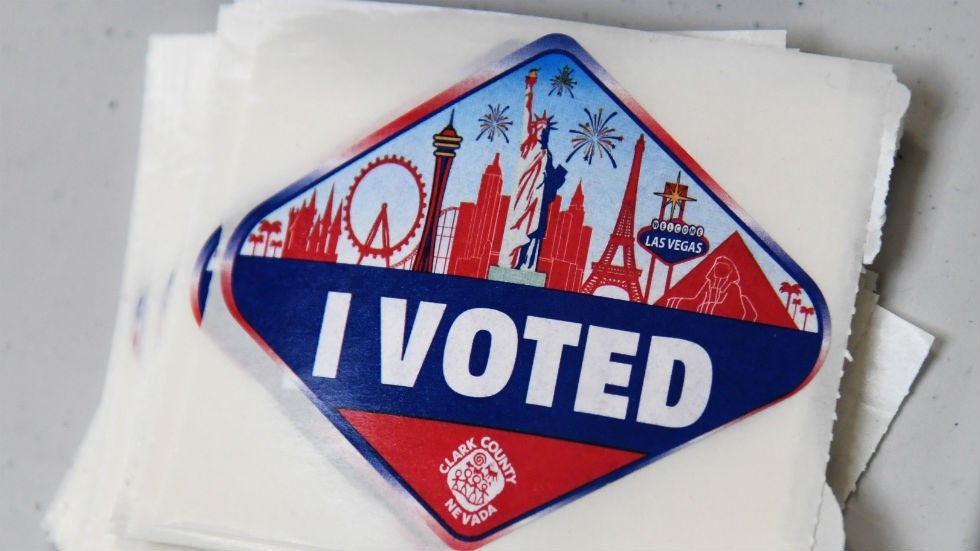
The biggest win in 2020? Getting nonvoters to the polls
First published on March 3, 2020 in The Hill.
Every presidential election year, there is much wringing of hands over the nearly 100 million Americans who choose not to vote. A new study by the Knight Foundation provides some clues on why — and what can be done to address this lack of civic engagement.
The study asked chronic nonvoters why they chose not to vote and their key answers were: they feel their vote doesn’t matter, they don’t believe they have enough information to make an informed decision, and they think “the system is rigged.” These concerns by nonvoters put our democracy at risk.
We are current and former secretaries of state from Rhode Island and Kentucky, who have been tasked with running free, fair and accurate elections. Although we are from red and blue states, we agree that nonvoters’ lack of participation creates a situation where elected candidates may not truly represent the will of all Americans. Representative democracy depends on the consent — and therefore the participation — of the governed. Our democracy is eroded by this lack of participation. It is imperative for states, election officials and political parties to run elections in a way that motivates nonvoters to cast ballots.
Luckily, there are steps election officials, educators and political parties can take to address nonvoters’ concerns.
For example, we can avoid stories and headlines on elections being “rigged” if we increase the visibility and understanding of how elections work. Voting is most visible on Election Day, but by then, it’s often too late to generate the trust and buy-in of eligible voters. We need to raise the visibility of voting and everything related to the process long before ballots are cast, to better inform nonvoters and earn their trust.
State elections officials should use some of the same tactics employed by businesses to explain their products: go straight to eligible voters with direct mail, email campaigns and advertising to explain how elections work in their states and municipalities. Additionally, most people are not aware that nearly all parts of our electoral systems can be observed publicly — from testing voting machines before the primaries to tallying ballots on Election Day. Letting the public know of the open design of elections also shows the many secure layers of checks and balances in each cycle.
The Knight study makes clear that educating our eligible voters is key to increasing voter participation. Not surprisingly, the study’s data show that voters tend to be more informed than nonvoters about their government. So, increasing participation by nonvoters requires across-the-board civic education. It’s hard to be engaged in a system you don’t understand. This needs to happen from kindergarten through adulthood.
Historically, the conversation on civics has focused on schools. State-level policymakers should work with educators to revitalize civics curricula and encourage projects that explore current-day democratic participation. But civic education must continue beyond the K-12 setting. Ensuring that nonvoters understand the importance of the ballot box to help solve the concerns of daily life is a first step to persuade them to participate. Unaffordable housing, the quality of their kids’ education, and crumbling infrastructure are all issues that nonvoters should realize are being decided on by the people they get to select — by voting.
States should also continue to invest in technology that lowers barriers to entry for voting. Most states now have online voter registration, which allows anyone with a smartphone to check and update their voter registration at any time. A growing number of states, both red and blue, now have automated voter registration. This allows eligible voters using government services, such as the DMV, to be registered through an automated process with an opt-out option.
What is frequently missing is a communication with the eligible voter that helps them understand the questions they are being asked when they vote. Having sample ballots available online so voters can familiarize themselves with their content and layout would be helpful to nonvoters.
Not all voting is run by secretaries of states. In some states, primaries are run by the corresponding political party. In all cases, political parties could help promote voter participation if they simplified and clearly communicated their candidate and delegate selection systems. Both Republicans and Democrats should realize that writing complicated election rules can create a lack of trust with potential voters and be a disincentive to participation.
Building trust in our electoral system will take more than just elected officials like us. It will take educators and journalists to share information about voting to all eligible and future voters. Government agencies must take advantage of technology to make it easier for nonvoters to participate. Government must also produce voter and election information in simple-to-understand language and attractive design, allowing civics education by design.
Political parties should consider how low participation rates hurt the entire system on which they depend, not just their opponents. If we can address the concerns of nonvoters and bring them to the voting booth, it will be a big win for our democracy.
Nellie Gorbea is the secretary of state for Rhode Island. Trey Grayson served as secretary of state for Kentucky from 2004 to 2011. Both were members of the review committee for the Knight Foundation study, “The 100 Million Project: The Untold Story of American Non-Voters.”